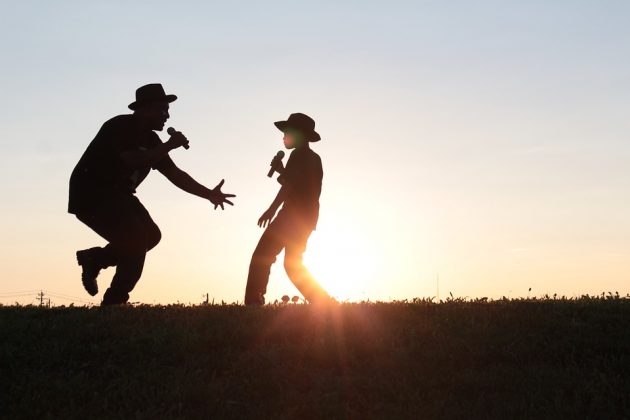
What You Should Know if You Wish to Play Latin-American Classics
21 December, 2020Latin American music is like no other music on the planet. Listening to it is a full-body experience. Latin American music epitomizes all that is vibrant and alive about music. You just have to feel and move to Latin American music.
The classics of the genre in particular are a pleasure to listen to and include some great instrumentals. A great example is Amigo by Roberto Carlos. You will soon find yourself wanting to play them.
You should know a few things if you wish to play Latin American classics such as:
Rich History
When we talk about Latin American music, we are talking about a large collection of musical styles. It mostly refers to music that came from Portuguese and Spanish-speaking areas of North and South America and West Africa.
When the music migrated to upper South, Central, and North America, it changed and became Latin American music. However, there are still many versions of Latin American music depending on where the music settled and the locals interpreted it.
If you want to play Latin American classics, you should get acquainted with the history of the genre. It will help you appreciate the music and connect with it much more deeply.
Elements of Latin American Music
Though there are probably hundreds of various Latin American music styles, there are elements that unite them all. A lot of these elements were adopted and included in the music as they traveled across the seas. However, some of them were present from the very beginning.
One element of Latin American music is complex rhythms. Their complexity originates from the percussion that was derived from African music.
There are certain styles of Latin American music that have a stronger western influence like the Tango. However, most owe their rhythm to West African music.
What makes Latin American music different is how the rhythm has evolved and changed in the Americas. In some places, the rhythm has become simpler and more direct. In other places, it has grown and mutated to become incredibly complex. Cuban American rumba is a great example.
The music also changed when it traveled across the Atlantic in the 20th and 21st centuries. The range of the rhythm grew wider to become very intricate and energetic.
If you want to play Latin American classics, then you should play some of the basic rhythms that you may encounter. You will find them online on many sources and you should use them to develop your ear.
You will Have to Play a Musical Instrument
Latin American music is particularly famous for being able to blend local traditional instruments with foreign musical styles. The result has always been the development of very unique sound combinations.
Examples of musical instruments you can use to play classic Latin American music include Congas, guitar, shekere, claves, bongos, and pandeiro. However, you can adapt just about any musical instrument and use it to play Latin American music.
Therefore, if you cannot find any traditional musical instrument, look for modern ones. You can check out these Musical Instrument Reviews. As long as you practice, you will soon find a way to adapt your instrument to Latin American music.
Trying to play basic rhythms and percussion on your instrument is a great place to start. Pretty soon, you may try playing the music on multiple instruments and creating your own percussion.
Latin Music has Special Lyrics and Language
In addition to playing the instruments used in Latin American music, you may want to sing. As stated above, the vast majority of Latin American music is in Spanish and Portuguese.
However, you will find lyrics from time to time in English or dialects from the Caribbean. Therefore, you can learn the lyrics to various songs and it will help your playing of the classics. You may also decide to sing along to the classics and learn the lyrics while playing them.
The lyrics of most Latin American songs are about romantic love between man and woman. So, you should expect to learn those first before you can find others or start making up your own lyrics.
Many Styles
Finally, if you are going to be playing Latin American music, you should know that it has many styles. There is essentially a style for everywhere the music has reached.
However, there are styles that are more popular than others including:
Samba
Samba is a style of Latin American music made popular by the Brazilian Carnival celebrations. It is dance music with an energetic rhythm that will make your body just want to move.
You can play Samba with a variety of traditional musical instruments like the berimbau (strings), the atabaque (drum), and the pandeiro (drum).
Mariachi
Mariachi is a form of Latin American music that originated in Spain. However, it has been largely affected by indigenous music and European dances like the Waltz.
You can play Mariachi music with strings and brass instruments. Mariachi music is especially popular in the Southern United States.
Salsa
Salsa music is incredibly popular in many places including the whole of the Caribbean. It originated from Africa but mostly settled in Cuba and surrounding regions.
You can play Salsa with traditional percussion instruments like congas, bongos, and the agogo bells. You can also include jazzy horn sections, piano, and brass instruments.
Salsa music is a particularly lively musical tradition filled with an exhilarating syncopated rhythm.
Tango

Tango music is an intriguing combination of Argentinian and European folk music and tradition. It involves a sensual dance between partners that usually has a lot of giving and take.
The tango is widely recognized in popular culture and is the most famous type of Latin American music.
As you can probably tell, learning to play Latin American music is a journey that you will enjoy if you want to play Latin American classics. The above are only a few things as there is much more you can know about Latin American music.
Learning to play the classics will only be the beginning of your journey. I hope that you will go much further and explore much more of the genre.
Follow Sounds and Colours: Facebook / Twitter / Instagram / Mixcloud / Soundcloud / Bandcamp
Subscribe to the Sounds and Colours Newsletter for regular updates, news and competitions bringing the best of Latin American culture direct to your Inbox.

